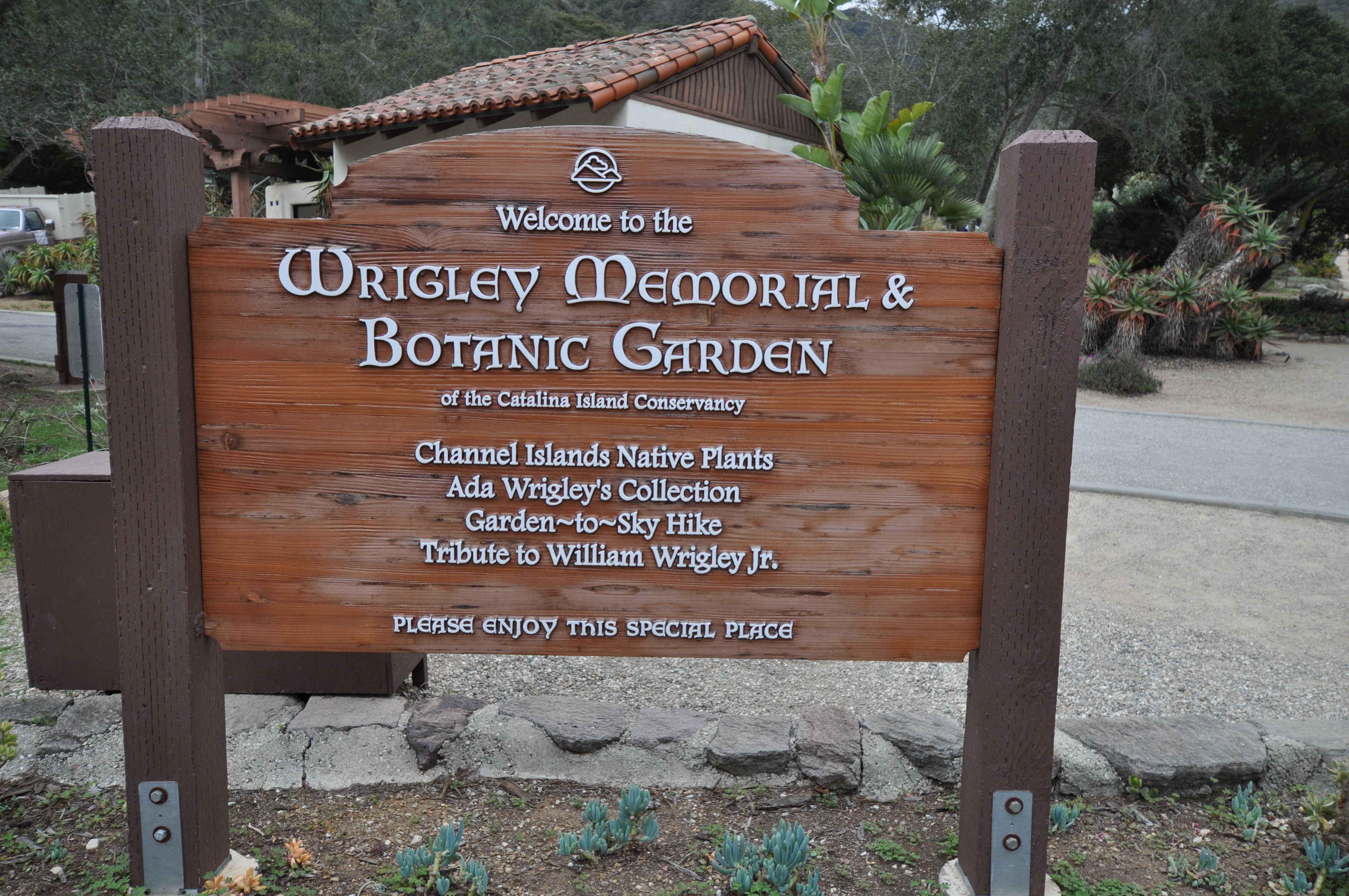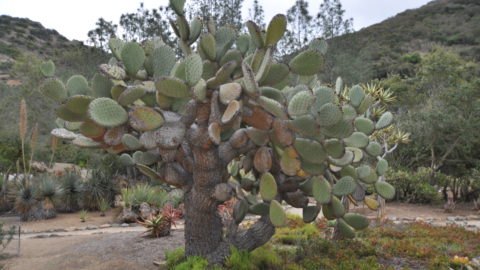LOCATED ON CALIFORNIA’S SANTA CATALINA ISLAND, Wrigley Memorial and Botanical Garden offers a botanical oasis within walking distance (about 1.5 miles) of the port city, Avalon. Santa Catalina Island’s temperate marine climate, and year-round growing conditions, makes it possible to showcase plants from Baja California, California Channel Islands, Africa, and Central and South America. The summers are warm and dry (66.6° F July average) and the winters are mild (54.8°F January average), with substantial fog. The port community of Avalon, located on the southeastern area of the island, receives on average less than 13 inches of rainfall per year. The prevailing winds, which blow from WNW, contribute greatly towards the drier conditions found on the southwestern side of the island. Dry and warm Santa Ana winds from the mainland can become quite violent during the winter months.

Wrigley Botanical Garden Entrance Sign

Avalon, Santa Catalina Island, California
The inspiration for a garden to showcase the unique flora of southern California’s Channel Islands and mainland came at the behest of Ada Wrigley, the wife of the chewing gum tycoon and owner of the Chicago Cubs, Mr. William Wrigley Jr. In 1935, Pasadena horticulturalist, Albert Conrad, under Ada’s supervision, designed and planted the first garden – a collection of desert plants. Under the direction of the Wrigley Memorial Garden Foundation, an effort was made in 1969 to revitalize the garden and expand it to nearly 40 acres. The garden places a special importance on eight endemic (endemism is the ecological state of a species being unique to a defined geographic location, such as an island, nation, country or other defined zone, or habitat type; organisms that are indigenous to a place are not endemic to it if they are also found elsewhere.) plant species. These plants are extremely rare, and, in some cases, are listed as Endangered. In total, the garden features some 500 native and non-native plant species, such as the statuesque giant yucca (Yucca guatemalensis), the white-flowered Catalina ironwood (Lyonothamnus floribundus ssp. floribundus), and the intricate California rockflower (Crossosoma californicum). In 1996, the Wrigley Memorial Garden Foundation merged with the Catalina Island Conservancy. This was a natural combining of two important ecological organizations, both dedicated to the protection and restoration of Santa Catalina’s amazing flora.

Yucca guatemalensis

Lyonothamnus floribundus var. floribundus
Additional Information About the Garden:

